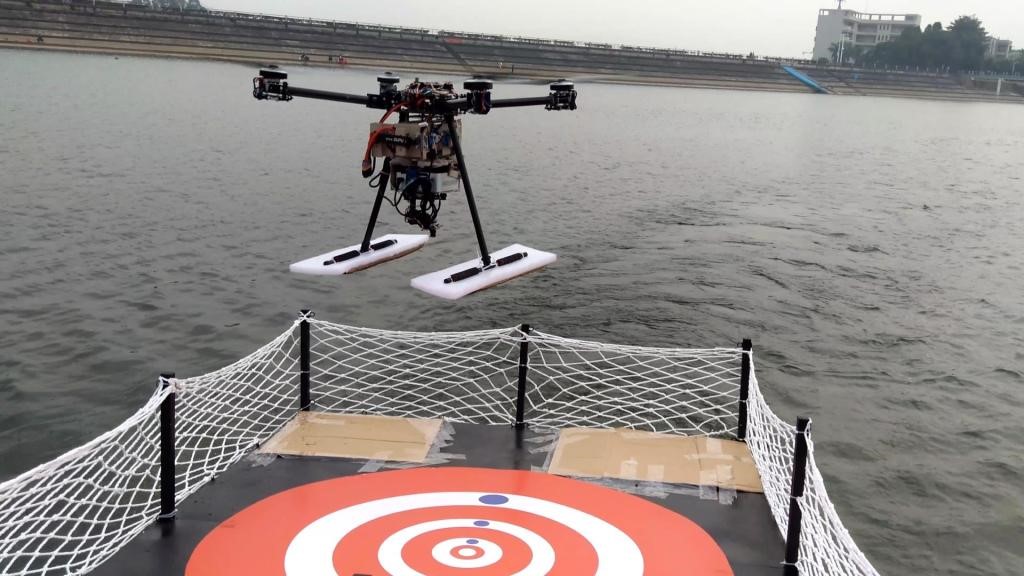It is very challenging to realize the autonomous landing and taking-off of the drone during the navigation of the autonomous unmanned boat. The difficulty li-es in how to make the two non-equal motion bodies working in different media to complete taking-off and landing missions accurately, fully autonomously, stab-ly and reliably on the water platform with extremely limited space and random bumps. Therefore, the coordinated taking-off and landing of the drones and boats is the enabling technology and frontier hotspot of Aeromarine cross-domain unmanned system.
On January 14th, the innovation team of fully automatic unmanned boat, set up by the School of Automation in the Industrial Technology Research Institute of Huazhong University of Science and Technology in Guangdong Province, successfully completed the coordinated movement of taking-off and landing of dro-nes and boats with the independently developed HUSTER-68 unmanned boats and drones in Songshan Lake, of Dongguan, Guangdong Province, marking a new breakthrough in the technologies of the unmanned boat team.
During the process of the coordinated taking-off and landing, the drone autonomously took off from the HUSTER-68 unmanned boat and performed the sp-ecified airspace detection mission. The HUSTER-68 unmanned boat independently detected the surrounding water environment and sent a return command to the drone. Then the drone started to return to the boat and independently recognized the landing position of the HUSTER-68 unmanned boat. After experiencin-g the three stages of “following” and “declining” and “boating”, it landed smoothly on the HUSTER-68 unmanned boat, and successfully realized the coordination.
It is reported that the drone is a four-rotor flight platform designed and developed by the team totally independently. The flight control system is based on APM development, equipped with sensors such as the microprocessor, PTZ camera, GPS, ultrasonic, etc., which can realize track planning, detection of water a-reas and airspace, and other autonomous working tasks. HUSTER-68 can independently complete the tasks of “water-shore-sky” complex environmental infor-mation perception and fusion, target detection, etc., and has the capability of autonomous obstacle avoidance and path planning.
This technology can expand the maneuverability of the motorboat fleets and significantly improve their detection range, which plays a vital role in safeguardi-ng China’s maritime rights and controlling China’s water resources. The innovation team has overcome problems, including slow recognition, inaccurate, incons-istency, high interference, and awkward landing. They realized the coordinated movement of self-vision drones and unmanned boats for the first time in China and made a substantial contribution to the innovation of maritime cross-domain unmanned system equipment and the implementation of the “Maritime Silk Roa-d” strategy.


